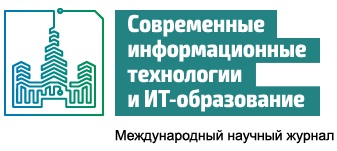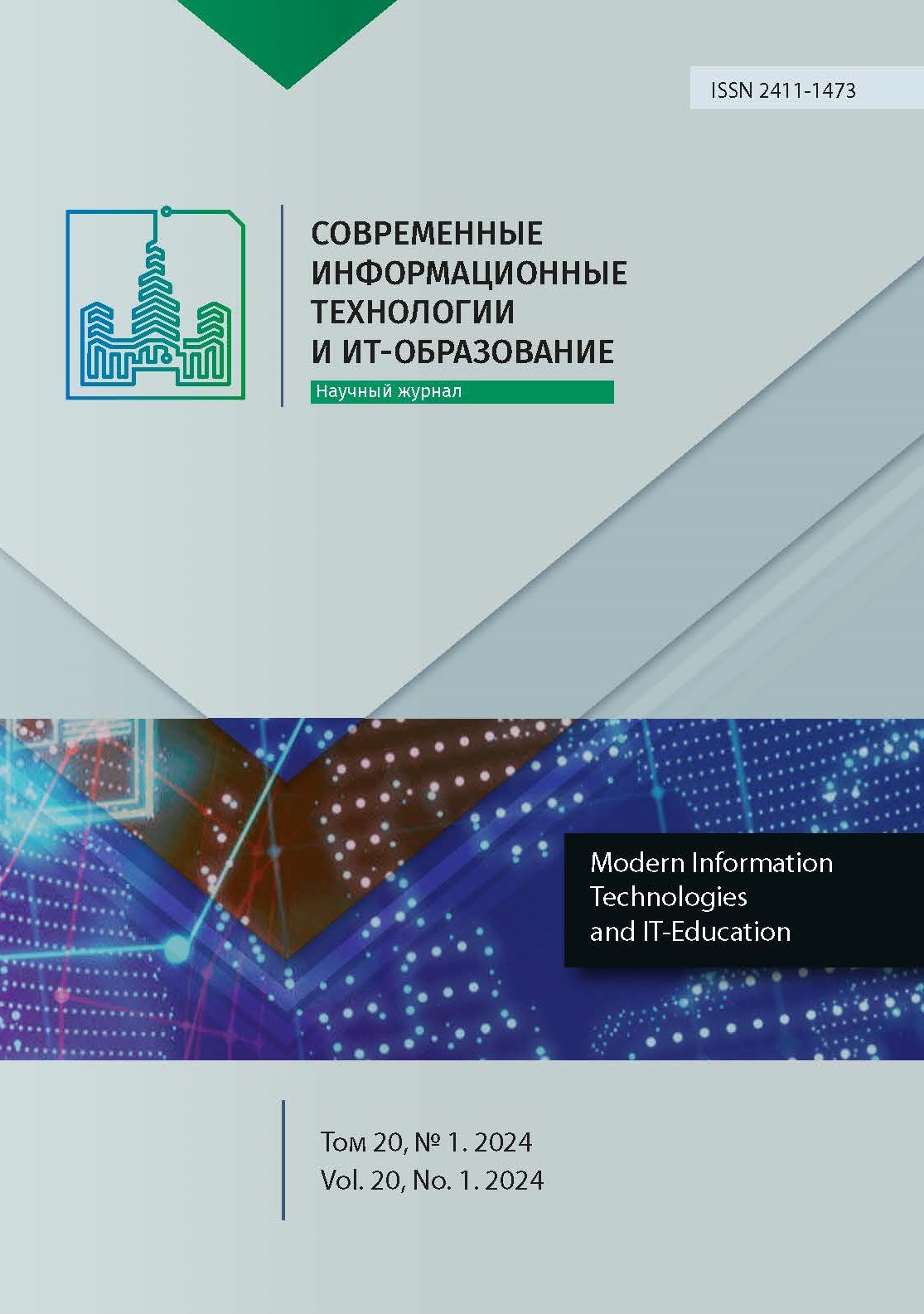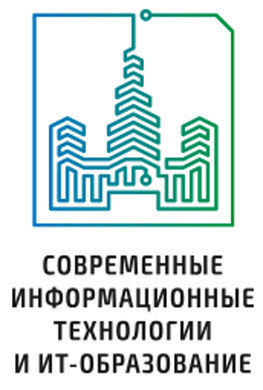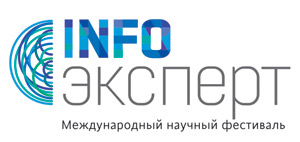Иммерсивная виртуальная реальность
эволюция интерактивного опыта
Аннотация
Исследования сосредоточены на иммерсивной виртуальной реальности (iVR), чтобы понять ее ключевые компоненты и их влияние на пользовательский опыт. Целью данного исследования было проанализировать компоненты iVR (визуальные, слуховые, интерактивные, тактильные компоненты, датчики и вычислительные мощности) и их роль в создании иммерсивной среды. Методика исследования состояла из обзора соответствующей литературы, анализа существующих технологий и их характеристик, а также исследования применения iVR в различных сферах. Результаты исследования показали, что визуальные элементы, звуковые эффекты, интерактивность, тактильная обратная связь, датчики и вычислительная мощность являются ключом к созданию захватывающего опыта в iVR. Анализ подчеркнул важность синхронизации этих элементов для достижения высокого уровня реальности и присутствия в виртуальном мире. Заключение исследования подтверждает, что иммерсивная виртуальная реальность представляет собой сложное сочетание технологий и элементов, которые вместе создают аутентичный опыт. Эти результаты указывают на постоянную необходимость дальнейшего развития всех компонентов iVR с целью улучшения пользовательского опыта и расширения возможностей применения этой технологии в различных сферах, таких как образование, здравоохранение, промышленность и развлечения.
Литература
2. Botella C., Baños R.M., García-Palacios A., Quero S. Chapter 22 – Virtual Reality and Other Realities. The Science of Cognitive Behavioral Therapy. 2017. p. 551-590. https://doi.org/10.1016/B978-0-12-803457-6.00022-2
3. Botella C., Botella L., Garcia-Palacios A., Riva G., Alcaniz M. Virtual reality for mental health: A review. Cyberpsychology, Behavior, and Social Networking. 2021;15(2):103-113.
4. Powers M.B., Emmelkamp P.M.G. Virtual reality exposure therapy for anxiety disorders: A meta-analysis. Journal of Anxiety Disorders. 2008;22(3):561-569. https://doi.org/10.1016/j.janxdis.2007.04.006
5. Veling H., Van Der Gaag M., Van Der Ven E. The Potential of Virtual Reality for the Investigation of Perceptual-Affective Processes in Schizophrenia. Frontiers in Human Neuroscience. 2014;8:466.
6. Opriş D., Pintea S., García-Palacios A., Botella C., Szamosközi Ș., David D.O. Virtual reality exposure therapy in anxiety disorders: a quantitative meta‐analysis. Depression and Anxiety. 2012;29(2):79-166. https://doi.org/10.1002/da.20910
7. Maples-Keller J.L., Bunnell B.E., Kim S.J., Rothbaum B.O. The Use of Virtual Reality Technology in the Treatment of Anxiety and Other Psychiatric Disorders. Harvard Review of Psychiatry. 2017;25(3):103-113. https://doi.org/10.1097/HRP.0000000000000138
8. Lohse K.R., Hilderman C.G., Cheung K.L., Tatla S., Van der Loos H.F. Virtual reality therapy for adults post-stroke: a systematic review and meta-analysis exploring virtual environments and commercial games in therapy. PLOS One. 2014;9(3):e93318. https://doi.org/10.1371/journal.pone.0093318
9. O’Brolcháin F., Jacquemard T., Monaghan D., O’Connor N., Novitzky P., Gordijn B. The Convergence of Virtual Reality and Social Networks: Threats to Privacy and Autonomy. Science and Engineering Ethics. 2016;22:1-29. https://doi.org/10.1007/s11948-014-9621-1
10. Spiegel J.S. The Ethics of Virtual Reality Technology: Social Hazards and Public Policy Recommendations. Science and Engineering Ethics. 2018;24(5):1537-1550. https://doi.org/10.1007/s11948-017-9979-y
11. Parsons T.D. Virtual Reality Ethics. In: Ethical Challenges in Digital Psychology and Cyberpsychology. Cambridge: Cambridge University Press; 2019. p. 229-253. https://doi.org/10.1017/9781108553384.013
12. Hui M.T.R., Liu S., Qiu Y., Zhu G., Fan X. A Virtual Reality Escape Room Game for Learning Computer Architecture Concepts. In: Lee S.G., An J., Chong N.Y., Strand M., Kim J.H. (eds.) Intelligent Autonomous Systems 18. IAS 2023. Lecture Notes in Networks and Systems. Vol. 794. Cham: Springer; 2024. p. 385-397. https://doi.org/10.1007/978-3-031-44981-9_32
13. Murillo-Zamorano L.R., López Sánchez J.Á., Godoy-Caballero A.L., et al. Gamification and active learning in higher education: is it possible to match digital society, academia and students' interests? International Journal of Educational Technology in Higher Education. 2021;18:15. https://doi.org/10.1186/s41239-021-00249-y
14. Slater M., Gonzalez-Liencres C., Haggard P., Vinkers C., Gregory-Clarke R., Jelley S., Watson Z., Breen G., Schwarz R., Steptoe W., Szostak D., Halan S., Fox D., Silver J. The Ethics of Realism in Virtual and Augmented Reality. Frontiers in Virtual Reality. 2020;1:1. https://doi.org/10.3389/frvir.2020.00001
15. Rachevsky D.C., d. Souza V.C., Nedel L. Visualization and Interaction in Immersive Virtual Reality Games: A User Evaluation Study. In: 2018 20th Symposium on Virtual and Augmented Reality (SVR). Foz do Iguacu, Brazil: IEEE Computer Society; 2018. p. 89-98. https://doi.org/10.1109/SVR.2018.00024
16. Balcerak Jackson M., Balcerak Jackson B. Immersive Experience and Virtual Reality. Philosophy & Technology. 2024;37:19. https://doi.org/10.1007/s13347-024-00707-1
17. Wang L. The Immersive and Interactive Experience in Virtual Reality Games and Films. Lecture Notes in Education Psychology and Public Media. 2023;5:491-500. https://doi.org/10.54254/2753-7048/5/20220674
18. Wan C.K., Chiu C.-H. A process perspective of immersive virtual reality user experiences: Transition dynamics and mechanisms during gameplay. International Journal of Human-Computer Studies. 2023;176:103037. https://doi.org/10.1016/j.ijhcs.2023.103037
19. Evin I., Hämäläinen P., Guckelsberger C. Cine-AI: Generating Video Game Cutscenes in the Style of Human Directors. In: Proceedings of the ACM on Human-Computer Interaction. 2022;6(CHI PLAY):223. https://doi.org/10.1145/3549486
20. He R., Cao Y., Hoorn J.F., Wei H. Cinemassist: An Intelligent Interactive System for Real-Time Cinematic Composition Design. In: Extended Abstracts of the CHI Conference on Human Factors in Computing Systems (CHI EA'24). Article number: 75. New York, NY, USA: Association for Computing Machinery; 2024. https://doi.org/10.1145/3613905.3650898
21. Lin L., Long D. Generative AI Futures: A Speculative Design Exploration. In: Proceedings of the 15th Conference on Creativity and Cognition (C&C '23). New York, NY, USA: 2023. p. 380-383. https://doi.org/10.1145/3591196.3596616
22. Marougkas A., Troussas C., Krouska A. et al. How personalized and effective is immersive virtual reality in education? A systematic literature review for the last decade. Multimedia Tools and Applications. 2024;83:18185-18233. https://doi.org/10.1007/s11042-023-15986-7
23. Jaruševičius P., Paulauskas L., Drungilas V., Jurgelaitis M., Blažauskas T. Transforming Interactive Educational Content into Immersive Virtual Reality Learning Objects. Applied Sciences. 2024;14(14):6366. https://doi.org/10.3390/app14146366
24. Sathyamoorthy M., Vanitha C.N., Dhanaraj R.K. Chapter 1 – Metaverse: A vehicle in digital healthcare. Metaverse Technologies in Healthcare. 2024. p. 1-15. https://doi.org/10.1016/B978-0-443-13565-1.00007-5
25. Damar S., Koksalmis G.H. A bibliometric analysis of metaverse technologies in healthcare services. Service Business. 2024;18:223-254. https://doi.org/10.1007/s11628-024-00553-3

Это произведение доступно по лицензии Creative Commons «Attribution» («Атрибуция») 4.0 Всемирная.
Редакционная политика журнала основывается на традиционных этических принципах российской научной периодики и строится с учетом этических норм работы редакторов и издателей, закрепленных в Кодексе поведения и руководящих принципах наилучшей практики для редактора журнала (Code of Conduct and Best Practice Guidelines for Journal Editors) и Кодексе поведения для издателя журнала (Code of Conduct for Journal Publishers), разработанных Комитетом по публикационной этике - Committee on Publication Ethics (COPE). В процессе издательской деятельности редколлегия журнала руководствуется международными правилами охраны авторского права, нормами действующего законодательства РФ, международными издательскими стандартами и обязательной ссылке на первоисточник.
Журнал позволяет авторам сохранять авторское право без ограничений. Журнал позволяет авторам сохранить права на публикацию без ограничений.
Издательская политика в области авторского права и архивирования определяются «зеленым цветом» в базе данных SHERPA/RoMEO.
Все статьи распространяются на условиях лицензии Creative Commons «Attribution» («Атрибуция») 4.0 Всемирная, которая позволяет другим использовать, распространять, дополнять эту работу с обязательной ссылкой на оригинальную работу и публикацию в этом журналe.













